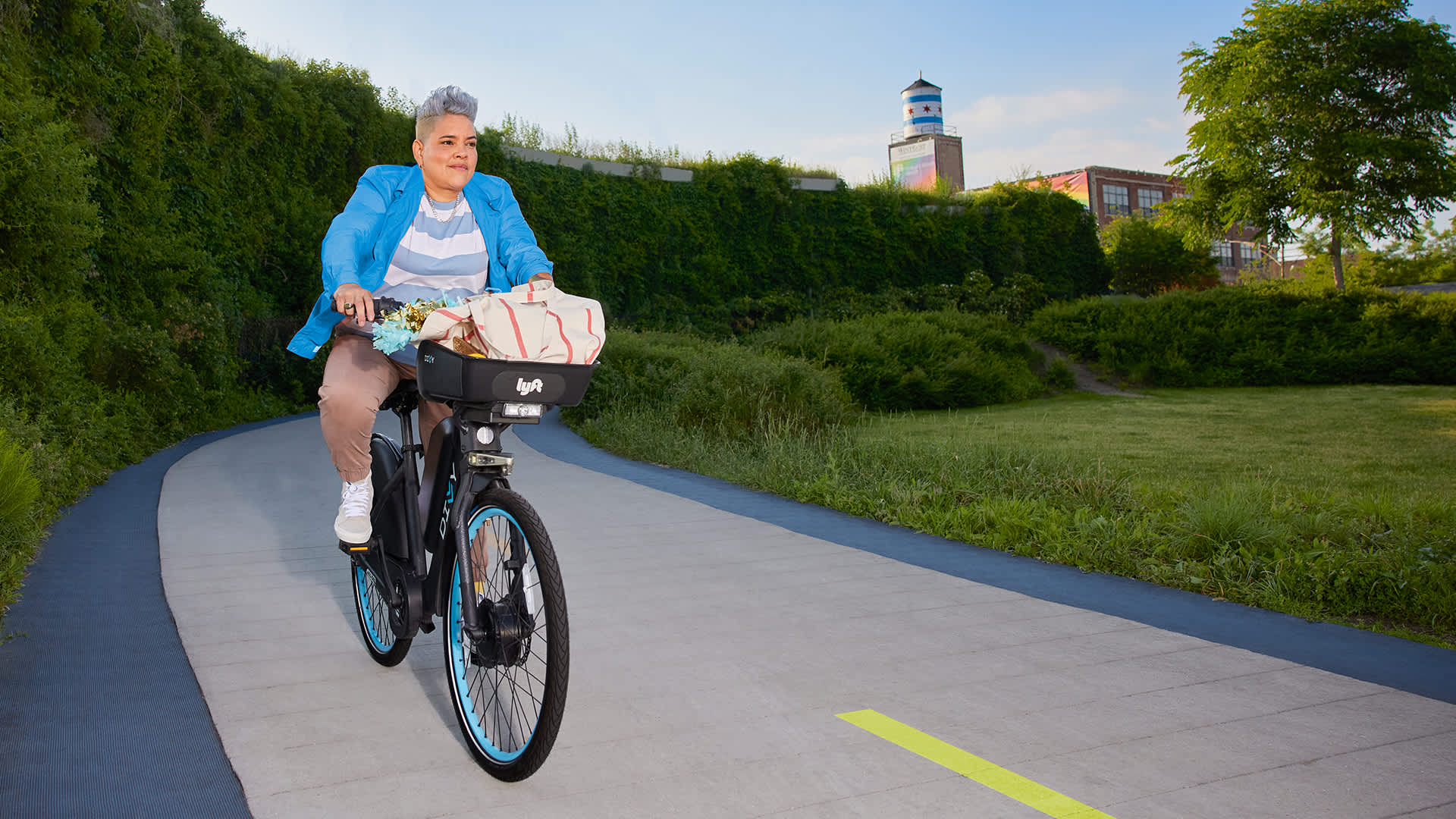
If you’ve visited a Pride celebration this month, chances are you saw a lot of bikes. At least, that’s what a new report from Lyft suggests. It turns out that people who identify as LGBTQIA+ make up 23% of Lyft’s bike-share riders, roughly three times their share of the general population.
Such a high number doesn’t surprise Abel Braughton, a longtime cyclist and general manager of Divvy, Lyft’s bike-share program in Chicago. The majority of their team at Lyft identifies as LGBTQIA+, they say — and that representation is strong within the cycling community as a whole. “I’m in bike circles so often, and sometimes it’s almost a surprise when someone’s straight,” they say.
"I’m in bike circles so often, and sometimes it’s almost a surprise when someone’s straight."
Abel Braughton
But why? What is it about biking — and bike share — that’s attracted high numbers of queer riders? To find out, we spoke to Braughton and two other LGBTQIA+ bike-share enthusiasts. They offered three potential reasons.
First, there’s the cultural overlap between the biking community and the queer community. Queerness refers to more than just sexual orientation or gender presentation, says Gonzalo Casals, the former commissioner of the New York City Department of Cultural Affairs. It’s a way of identifying outside traditional power structures. Cycling has a similar legacy.
Bikes have a long history of powering social movements — suffragists like Susan B. Anthony, for instance, saw them as a form of empowerment at a time when many women weren’t allowed to drive cars. It’s a legacy that persists throughout the decades. In 1987, when New York City Mayor Ed Koch banned cycling in the heart of Midtown Manhattan during the workweek, it was seen as targeting and discriminating against working-class bike messengers; after weeks of protest, the ban was eventually lifted. And in 2004, hundreds of bikers were arrested while protesting the Republican National Convention in New York City. “A lot of people who had experience organizing, including from the LGBTQ community, used that experience to support the biking movement in the city,” says Casals.
Bikes also provide a degree of autonomy and safety that walking or public transport may not. At a time when drag performers and trans people are increasingly threatened and criminalized, many LGBTQIA+ riders may prefer to avoid public transit, says Marti Gould Cummings, a Hell’s Kitchen resident, drag artist, and former candidate for City Council.
Braughton, who’s trans, agrees that cycling reduces the chances of encountering someone who may be violent. “It feels more freeing,” they say. “I know that 99% of the time I’m not going to have an interaction that’s going to set my day on a different course.”
There are larger structural reasons as well. Bike-share systems are often located in cities — and neighborhoods — with large LGBTQIA+ populations, like Chicago’s Humboldt Park and New York City’s Hell’s Kitchen. And, at least in some cases, public transportation is sparse, fueling the need for micromobility. What’s more, bike share can be more affordable than bike ownership, especially for people who can’t store a bike conveniently and securely.
In those neighborhoods, biking is often one of the most effective — and fun — ways to get around, Cummings says. “Whenever I use a bike-share service, it’s always with friends,” they say. “We’re just like our own little gaggle, laughing and playing music.”
The joy of biking socially, the relative freedom and autonomy that it provides, and the geographic location of queer enclaves may all account for why so many bike-share riders identify as LGBTQIA+. Whatever the reasons, the strong ties between the queer community and cycling community is a point of pride, at least for Braughton: “There’s nothing more complimentary to me than when I show up to a queer event and see four Divvys parked outside.”


